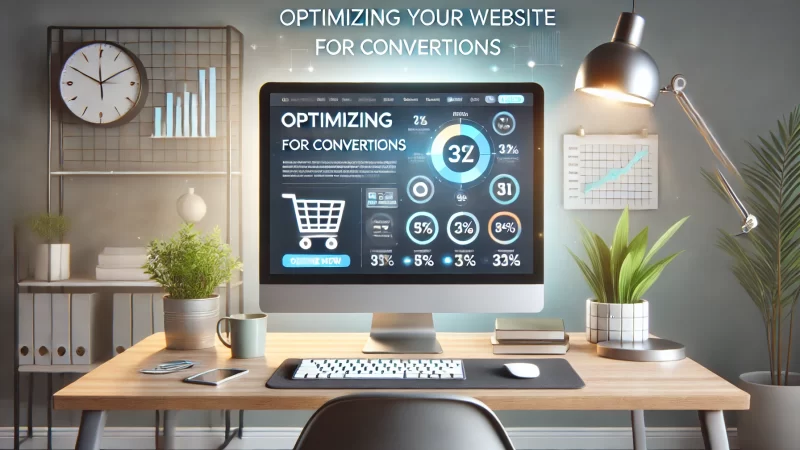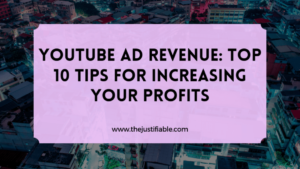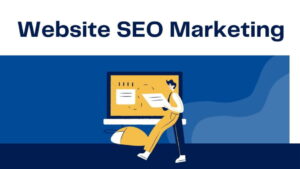Are you wondering how to do online marketing for small business successfully in 2025? How do you navigate emerging trends, tools, and strategies to compete effectively? This article provides a complete guide tailored to help small business owners thrive in the digital marketing space.
Understanding Online Marketing Basics For Small Business
Online marketing is a game-changer for small businesses, offering countless opportunities to grow and connect with customers. Before diving into advanced strategies, it’s crucial to understand the fundamentals that lay the groundwork for success.
What Is Online Marketing And Why Does It Matter?
Online marketing refers to using digital channels to promote products or services, engage customers, and drive sales. It’s a powerful tool for small businesses because it levels the playing field, allowing them to compete with larger companies without requiring massive budgets.
When you embrace online marketing, you unlock the ability to reach customers wherever they are. Whether it’s through social media, search engines, or email, these channels allow you to build relationships and foster trust. For small businesses, this can mean turning local buyers into loyal advocates.
One of the most significant advantages is how measurable it is. Unlike traditional methods, online marketing provides data in real time. Imagine knowing how many people saw your ad, clicked on it, or bought your product—it’s a huge advantage!
It also matters because customer behavior has shifted. Today, most people search online before making decisions. Without an online presence, small businesses risk being overlooked entirely.
I suggest starting with simple strategies like creating a professional website or setting up social media profiles. These foundational steps help establish credibility and visibility, which are crucial for growth.
Benefits Of Digital Marketing Over Traditional Advertising
Digital marketing provides unmatched benefits compared to traditional methods, making it an essential strategy for small businesses. From cost-effectiveness to precision targeting, the advantages are clear.
First, digital marketing is incredibly affordable. Printing flyers or running TV ads can drain a small business’s budget quickly. With digital platforms, you can reach thousands of potential customers for a fraction of the cost, ensuring better returns on investment.
Second, it offers precision targeting. Imagine being able to show ads only to your ideal customer—those most likely to buy your product or service. Platforms like Facebook and Google Ads let you target based on demographics, interests, and even online behaviors.
Third, digital marketing is interactive. Unlike static billboards, you can engage directly with your audience. Comments, shares, and messages create opportunities to build relationships, answer questions, and foster trust.
Finally, the results are trackable. You’ll know exactly what’s working and what isn’t, which means you can optimize campaigns to get better results. This adaptability ensures every dollar spent works harder for your business.
I advise small businesses to focus on one or two platforms where their customers are most active. Starting small and scaling gradually often yields the best results.
Common Misconceptions About Online Marketing Strategies
Many small businesses shy away from online marketing due to misconceptions that hold them back. Let’s clear up some common myths and set the record straight.
Some believe that online marketing is expensive and only for big companies. That’s simply not true. With free tools like Google My Business and affordable social media advertising, even the smallest businesses can make an impact without breaking the bank.
Others think online marketing requires extensive technical skills. While understanding the basics of tools and platforms is helpful, most are designed to be user-friendly. If you can post on Facebook or send an email, you’re already ahead of the game.
There’s also a myth that online marketing delivers overnight results. This misconception can lead to frustration when immediate success doesn’t happen. Marketing takes time to build momentum. Think of it as planting seeds—you need to nurture them before they grow.
Some worry they’ll struggle to compete with big brands. The truth is, small businesses can excel by being more personal, responsive, and community-focused than larger competitors. Your unique story and local presence are major advantages.
I recommend starting with a mindset of learning and experimentation. By staying consistent and focused, small businesses can overcome these myths and reap the rewards of online marketing.
Creating A Winning Digital Marketing Strategy

Every small business needs a solid digital marketing strategy to compete and thrive. A well-crafted plan helps focus efforts, measure results, and achieve long-term success. Let’s explore the essential steps to create a strategy that works.
Defining Clear Marketing Goals For Your Business
Establishing clear marketing goals is the cornerstone of success for small businesses. Without specific objectives, it’s easy to lose focus and waste valuable resources.
Start by asking yourself what you want to achieve with online marketing. Is it increasing website traffic, generating leads, or boosting sales? Clearly defining these goals helps guide your efforts. For example, if your goal is to grow your email list, you can design campaigns that specifically target email sign-ups.
Make your goals measurable and time-bound. Instead of saying, “I want more customers,” aim for something like, “I want 500 new customers in the next six months.” This approach gives you a benchmark to evaluate progress and make adjustments as needed.
Break your goals into smaller, actionable steps. For instance, if you’re aiming to improve brand awareness, start with creating engaging content for social media or launching a small ad campaign. Tackling smaller tasks keeps you motivated and on track.
I believe it’s important to review and adjust your goals periodically. As your business grows, so should your objectives. This ensures your strategy remains relevant and aligned with your evolving needs.
Identifying Your Target Audience Effectively
Knowing your target audience is vital for creating marketing campaigns that resonate. A well-defined audience ensures your efforts are focused and impactful.
Begin with research. Look into the demographics, interests, and pain points of your ideal customers. Tools like Buzzsumo, surveys, and social media insights can provide valuable information. For example, if you own a bakery, your target audience might include local families and event planners.
Create detailed buyer personas to better understand your audience. These personas should include age, gender, income, location, and buying habits. For instance, you might define a persona like “Busy Moms” who value convenience and healthy options.
Tailor your messaging to address their needs and preferences. If your audience values sustainability, highlight eco-friendly aspects of your business. When your content aligns with their interests, it’s easier to build trust and drive engagement.
I suggest continually testing and refining your understanding of your audience. Preferences can change over time, so staying updated ensures your campaigns remain effective and relevant.
Prioritizing Budget Allocation For Online Campaigns
Managing your marketing budget effectively is crucial for small business success. Strategic allocation ensures you get the most value from every dollar spent.
Start by assessing how much you can comfortably invest in marketing without straining your finances. Even a modest budget can yield impressive results if used wisely. For instance, social media ads often deliver high returns on a small investment.
Allocate funds based on your goals and target audience. If most of your customers are active on Instagram, it makes sense to prioritize spending there. For businesses looking to drive website traffic, investing in SEO and Google Ads could be more effective.
Track your expenses and results closely. Tools like Google Ads Manager and social media analytics help monitor performance, so you know what’s working. If a particular campaign isn’t delivering, adjust your strategy to focus on more productive areas.
I recommend setting aside a small portion of your budget for experimenting with new strategies. Trying different platforms or ad formats can uncover untapped opportunities, giving your business a competitive edge.
Leveraging Social Media Platforms For Engagement
Social media platforms offer unmatched opportunities for small businesses to connect with their audience, build relationships, and drive engagement. Leveraging these platforms effectively requires thoughtful strategies tailored to your business goals.
Choosing The Right Social Media Channels For Small Businesses
Selecting the right social media channels can make or break your online marketing efforts. The key is focusing on platforms that align with your business and where your target audience spends the most time.
Start by identifying your audience’s preferred platforms. For example, if you’re targeting millennials or Gen Z, Instagram and TikTok might be ideal. For professional services, LinkedIn could be more effective. Understanding where your audience is most active ensures your efforts reach the right people.
Consider the nature of your business when making your choice. Visual platforms like Instagram and Pinterest work well for product-based businesses, while Twitter can be useful for sharing news and engaging in real-time conversations. The goal is to choose platforms that amplify your strengths.
I recommend starting with one or two channels instead of trying to manage too many at once. This allows you to focus on quality content and meaningful interactions. As you grow more comfortable, you can explore additional platforms.
Regularly review the performance of your chosen platforms. If one isn’t delivering results, don’t hesitate to pivot. The flexibility to adapt ensures your strategy remains effective over time.
Creating Compelling Social Media Content That Drives Results
Social media success hinges on creating content that captivates and resonates with your audience. Compelling content not only grabs attention but also encourages meaningful interactions.
Begin with storytelling. Share the journey of your small business, customer success stories, or behind-the-scenes looks at your operations. Personal stories help humanize your brand and foster emotional connections with your audience.
Visuals play a crucial role in social media. High-quality images, videos, and graphics stand out and are more likely to be shared. For instance, a clothing boutique might showcase new arrivals with vibrant, eye-catching photos or video reels.
Engage your audience with interactive content. Polls, quizzes, and live Q&A sessions create two-way communication and keep followers interested. I believe the more you interact with your audience, the stronger your relationship becomes.
Consistency is vital. Posting regularly and maintaining a cohesive brand voice helps build trust and familiarity. Tools like Hootsuite or Buffer can simplify scheduling and ensure your content calendar stays on track.
Using Paid Ads To Boost Visibility On Social Platforms
Paid ads are a powerful tool for small businesses looking to expand their reach and attract new customers. With precise targeting options, social media advertising delivers results that are both impactful and measurable.
Start with a clear goal for your ads. Whether it’s driving traffic to your website, increasing sales, or growing your following, having a specific objective ensures your campaigns are focused. For instance, a local restaurant might run ads promoting a special weekend menu.
Target the right audience to maximize ROI. Platforms like Facebook and Instagram let you select audiences based on age, location, interests, and behaviors. I suggest using these tools to ensure your ads reach the people most likely to engage with your business.
Keep your ads visually appealing and engaging. Bold images, short videos, or concise text can quickly capture attention in users’ feeds. Highlighting a unique selling point—like a discount or a time-limited offer—encourages clicks and conversions.
Monitor and tweak your ads frequently. Platforms provide analytics to show how your campaigns perform. If you notice a drop in engagement, try adjusting your visuals, copy, or targeting settings to improve results.
Optimizing Your Website For Conversions

A well-optimized website is essential for converting visitors into customers. Ensuring your website provides a seamless experience encourages users to take action, whether it’s making a purchase, signing up for a newsletter, or contacting your business.
Importance Of A Mobile-Friendly And Fast-Loading Website
A mobile-friendly and fast-loading website is crucial in today’s digital world, where most users browse from smartphones. Visitors expect a smooth experience, and failing to meet their expectations can result in lost opportunities.
Mobile-friendliness starts with responsive design. Your website should automatically adjust to fit any screen size, whether it’s a phone, tablet, or desktop. This ensures users can easily read and navigate your site. I suggest testing your site on different devices to ensure consistency across platforms.
Website speed directly impacts user experience. A slow website frustrates visitors, leading to higher bounce rates. Tools like Google PageSpeed Insights can help identify areas for improvement, such as compressing images or reducing code bloat.
Remember that search engines prioritize mobile-friendly, fast-loading websites. Improving these elements not only enhances user experience but also boosts your search engine rankings. Faster sites are more likely to appear higher in search results.
I believe maintaining a mobile-first mindset is key for small businesses. Start with the mobile experience and expand to larger screens. This approach ensures your site performs well where it matters most.
Using SEO Techniques To Improve Website Rankings
Search engine optimization (SEO) ensures your website ranks higher in search results, increasing visibility and traffic. Small businesses can use simple yet effective SEO techniques to improve their rankings.
Begin with keyword research. Identify terms your target audience is searching for, such as “how to do online marketing for small business.” Incorporate these naturally into your content, titles, and meta descriptions. Avoid stuffing keywords, as it can harm your rankings.
Optimize on-page elements like headings, URLs, and images. Use descriptive file names and alt text for images, which not only improve accessibility but also enhance SEO. For instance, an image of a bakery’s cupcake could use “chocolate-cupcake-bakery.jpg” as its file name.
Internal linking is another powerful SEO tool. Linking to other pages within your site helps users navigate easily and keeps them on your site longer. This signals to search engines that your content is valuable.
I recommend keeping an eye on analytics. Tools like Monsterinsights and Search Console provide insights into how your site performs in search results. Regularly review this data to adjust and improve your SEO efforts.
Designing Effective Landing Pages For Lead Generation
Landing pages are powerful tools for capturing leads and driving conversions. A well-designed landing page focuses on a specific goal and guides users toward taking action.
Start with a clear and compelling headline. Your headline should instantly communicate the value of your offer. For example, “Get 20% Off Your First Order—Sign Up Now” grabs attention and encourages action.
Focus on simplicity. Avoid clutter and distractions that could confuse visitors. Use clean layouts, short forms, and prominent call-to-action (CTA) buttons. I recommend using contrasting colors for CTAs to make them stand out.
Include trust signals to build credibility. Testimonials, reviews, or certifications reassure visitors that they’re making a safe choice. For instance, a financial advisor might include a badge for a professional accreditation on their landing page.
Test and optimize your landing pages regularly. A/B testing different headlines, images, or CTA placements can help you determine what resonates most with your audience. Small tweaks often lead to significant improvements in performance.
Developing A Content Marketing Plan That Works
Creating a strong content marketing plan helps small businesses stand out, attract potential customers, and build authority. The key is delivering valuable, engaging content that resonates with your audience and inspires action.
Writing Informative Blog Posts To Attract Visitors
Informative blog posts are an excellent way to drive traffic to your website and showcase expertise in your field. Blogging helps small businesses build trust and connect with their audience organically.
Start with topics your audience cares about. Think about common questions or challenges they face and provide practical solutions. For instance, a landscaping business might write about “Top Tips for a Beautiful Backyard Garden on a Budget.” Addressing real problems keeps readers engaged and encourages them to return.
Use a conversational tone that feels personal and relatable. Imagine you’re speaking directly to your reader. I find that sharing personal experiences or examples helps create a stronger connection and makes the content more engaging.
Optimize each post for SEO. Include your primary keyword, like “how to do online marketing for small business,” naturally throughout the content. Use headings, meta descriptions, and image alt texts strategically to improve search engine visibility.
Include a clear call-to-action (CTA) at the end of each post. Whether it’s subscribing to a newsletter, exploring your services, or contacting your team, CTAs guide readers toward the next step, turning visitors into leads.
Incorporating Video Marketing Into Your Strategy
Video marketing has become a game-changer for small businesses. Videos capture attention, convey messages quickly, and are highly shareable, making them an essential part of a modern content marketing plan.
Start simple. Use your smartphone to create short, authentic videos that showcase your products, share tips, or give behind-the-scenes glimpses of your business. Authenticity matters more than expensive equipment—viewers appreciate realness.
Focus on storytelling. Share your journey, highlight a satisfied customer’s experience, or demonstrate how your product solves a problem. For example, a bakery could create a video showing the process of baking a signature cake from start to finish.
Utilize social media platforms like Instagram Reels, TikTok, and YouTube for video distribution. These platforms prioritize video content, increasing your chances of reaching a larger audience. I suggest experimenting with different formats, such as tutorials, testimonials, or live sessions, to see what resonates most.
Track video performance metrics like views, engagement, and shares. This helps you identify which types of content work best, so you can refine your strategy and continue delivering videos your audience loves.
Using Infographics And Ebooks To Educate Your Audience
Infographics and eBooks are powerful tools for presenting complex information in an easily digestible format. They’re great for establishing authority while providing value to your audience.
Infographics combine visuals with concise text to explain concepts quickly. For example, a fitness coach could create an infographic on “5 Easy Stretches for Better Flexibility.” Use eye-catching designs and clear, simple language to make your message stand out.
eBooks dive deeper into topics, offering comprehensive guides or solutions. Small businesses can use them to showcase expertise and provide actionable advice. For instance, a digital marketing agency might create an eBook titled “The Ultimate Guide to Social Media Success.”
Make these resources available as downloadable content on your website. Offer them in exchange for an email address to grow your subscriber list. This creates a win-win situation—your audience gets valuable content, and you gain potential leads.
I recommend repurposing content from blog posts or videos into infographics or eBooks. This saves time and ensures consistent messaging across your marketing channels. It’s a smart way to maximize your content’s reach and impact.
Exploring Email Marketing Tactics For Small Businesses

Email marketing remains one of the most cost-effective ways for small businesses to engage with their audience, build relationships, and drive conversions. Success starts with using the right tactics to maximize impact.
Building An Email List Of Loyal Subscribers
A strong email list forms the foundation of any successful email marketing strategy. Focusing on building a list of loyal subscribers ensures your campaigns reach people who are genuinely interested in your business.
Start with creating enticing opt-in offers. People are more likely to subscribe when they see value. For instance, you could offer a free guide, discount coupon, or exclusive access to new products in exchange for their email address. These incentives encourage sign-ups while showcasing the value of staying connected.
Place subscription forms strategically across your website. Add them to your homepage, blog posts, and checkout pages. I suggest using a pop-up or slide-in form to grab attention without being intrusive. Clearly communicate what subscribers will gain, like updates, tips, or special offers.
Promote your email list across your social media platforms. Share posts highlighting the benefits of subscribing, or create lead ads on Facebook and Instagram to attract more subscribers. Social media is an excellent way to tap into your existing followers and turn them into loyal email contacts.
Focus on quality over quantity. Building a large list of uninterested subscribers won’t drive results. Instead, aim for engaged individuals who align with your business’s offerings. Regularly clean your list by removing inactive subscribers to maintain strong engagement rates.
Crafting High-Converting Email Campaigns
Effective email campaigns are designed to capture attention, deliver value, and drive readers to take action. With the right approach, your emails can become a powerful tool for nurturing leads and boosting sales.
Start with a compelling subject line. This is the first thing recipients see, and it determines whether they open your email. Use curiosity, urgency, or a personal tone to draw them in. For example, “Limited-Time Offer: 20% Off Just for You” sparks interest and encourages clicks.
Personalize your emails whenever possible. Addressing subscribers by name and tailoring content to their preferences makes your messages feel more relevant. Many email marketing platforms, like Mailchimp or Constant Contact, offer tools to easily add personalization.
Include a clear call-to-action (CTA). Whether you want readers to visit your website, redeem an offer, or register for an event, make it easy for them to take the next step. I recommend using bold buttons or links that stand out visually.
Test different elements of your emails to optimize performance. Experiment with subject lines, images, and CTAs to see what resonates best with your audience. Continuous testing helps you create campaigns that consistently deliver results.
Tracking And Improving Email Performance Metrics
Monitoring email performance metrics is essential for understanding what works and where to improve. Tracking these insights helps refine your strategy and ensure your efforts drive maximum impact.
Start with open rates. This metric shows how many recipients opened your email. If your open rates are low, focus on improving subject lines and timing. Sending emails during peak engagement times, like mid-morning or early evening, can make a big difference.
Click-through rates (CTR) reveal how many recipients engaged with your content. To boost CTR, ensure your CTAs are clear and your content is visually appealing. I suggest using short paragraphs, bullet points, and images to make emails easy to read.
Pay attention to bounce rates. High bounce rates indicate issues with your email list, such as invalid addresses. Regularly updating your list and verifying email addresses can help reduce bounces and improve deliverability.
Monitor conversion rates to measure the success of your campaigns. Whether it’s sales, sign-ups, or downloads, this metric shows how well your emails drive desired actions. Analyzing these results provides valuable insights for tweaking future campaigns.
Understanding Pay-Per-Click Advertising Essentials
Pay-per-click (PPC) advertising can be a game-changer for small businesses, offering a cost-effective way to drive traffic, generate leads, and increase sales. Success with PPC lies in understanding the basics and applying strategies that deliver results.
Setting Up Google Ads For Small Business Success
Google Ads is one of the most effective platforms for small businesses to create targeted ad campaigns that reach the right audience. A well-structured setup ensures your campaigns are optimized for success.
Start with a clear goal in mind. Are you looking to increase website traffic, generate leads, or drive online sales? Defining your objective helps shape your ad campaigns and ensures your efforts align with your business goals. For instance, a local café might focus on driving foot traffic through location-based ads.
Keyword research is essential. Use tools like Google Keyword Planner to identify terms your target audience is searching for, such as “how to do online marketing for small business.” Choose a mix of high-volume and long-tail keywords to maximize reach while maintaining relevance.
Create compelling ad copy that grabs attention and encourages clicks. Focus on highlighting unique benefits or solving specific problems for your audience. For example, an ad for a small clothing boutique could emphasize “Exclusive Designs at Affordable Prices—Shop Now.”
Regularly review and optimize your campaigns. I suggest analyzing click-through rates (CTR), cost-per-click (CPC), and conversion rates to ensure your ads deliver value. Adjusting bids, keywords, or ad placements based on performance helps improve results over time.
Avoiding Common PPC Mistakes That Drain Budgets
While PPC advertising is powerful, it’s easy to make mistakes that lead to wasted spending. Being aware of common pitfalls can save your budget and improve campaign effectiveness.
One common mistake is neglecting negative keywords. These are terms you exclude from your campaign to avoid irrelevant clicks. For example, if you’re selling premium shoes, adding “free” as a negative keyword prevents your ad from showing to users looking for free products.
Another issue is setting overly broad targeting parameters. Casting a wide net might seem like a good idea, but it often leads to irrelevant clicks. I recommend narrowing your audience based on location, demographics, and interests to ensure your ads reach the right people.
Failing to track conversions is another costly error. Without tracking, you won’t know if your ads are driving sales or leads. Tools like Google Ads Conversion Tracking help you measure success and refine your strategy.
Avoid the temptation to set and forget your campaigns. PPC requires regular monitoring and adjustments. Checking in weekly allows you to identify underperforming ads and allocate your budget to those that perform better.
Measuring ROI From PPC Campaigns
Measuring the return on investment (ROI) from your PPC campaigns ensures you’re getting value from your advertising efforts. Understanding which metrics matter most can help you refine your approach and maximize profitability.
Start by calculating your cost-per-acquisition (CPA). This metric shows how much you spend to acquire each customer. Divide your total ad spend by the number of conversions to get your CPA. If this number is higher than your profit margin, adjustments are necessary.
Track revenue directly attributed to your PPC campaigns. Platforms like Google Ads provide insights into which ads are driving sales, making it easier to allocate your budget effectively. For instance, you might find that ads targeting specific keywords generate the highest revenue.
Focus on lifetime customer value (LCV). This metric accounts for the total revenue a customer generates over their relationship with your business. If your campaigns bring in loyal customers with high LCV, a slightly higher CPA may still be worth it.
I suggest setting clear benchmarks and goals for each campaign. Whether it’s achieving a specific CTR or reducing your CPC, having measurable targets helps keep your strategy on track and ensures you continually improve results.
Harnessing The Power Of Local SEO Marketing

Local SEO marketing is one of the most effective ways for small businesses to attract nearby customers. By targeting people in your area, you can boost visibility and drive foot traffic to your business while building lasting connections with the community.
Optimizing Google My Business For Local Searches
Google My Business (GMB) is a powerful tool for increasing your visibility in local search results. An optimized GMB profile ensures customers can find your business and learn essential details quickly.
Start by claiming and verifying your GMB listing. If you haven’t already done this, I suggest visiting the Google My Business website to create your account. Verification builds trust and enables you to manage the information displayed in local search results.
Ensure all your business information is accurate and complete. Include your business name, address, phone number, website, and hours of operation. Consistency across your GMB profile and other online listings is critical for ranking well in local searches.
Use high-quality images to showcase your business. Add photos of your storefront, products, or team to make your profile more engaging. For example, a café could include pictures of its menu items or cozy seating areas to entice potential customers.
Leverage GMB features like posts and Q&A to connect with your audience. Sharing updates about special promotions or upcoming events helps you stay relevant while answering questions demonstrates your dedication to customer service.
Building Backlinks From Local Directories
Backlinks from local directories signal to search engines that your business is reputable and relevant to the local community. These links play a vital role in strengthening your local SEO efforts.
Start with well-known directories like Yelp, Yellow Pages, and Bing Places. Ensure your business is listed correctly and consistently across all platforms. I recommend including essential details like your website URL, phone number, and business hours for each listing.
Look for niche-specific directories related to your industry. For instance, a wedding photographer might list their business on wedding vendor directories. These targeted backlinks add credibility and help you reach a more specific audience.
Collaborate with local organizations or bloggers. Partnering with community groups or influencers in your area often leads to backlinks from their websites, boosting your visibility and authority. For example, sponsoring a local event might result in a mention and link on the event’s website.
Track your backlinks using tools like Google Search Console or Ahrefs. Regularly monitoring your links ensures they remain active and helps you identify new opportunities to strengthen your backlink profile.
Encouraging Positive Customer Reviews To Boost Trust
Positive reviews not only improve your reputation but also influence local SEO rankings. Businesses with high ratings and frequent reviews tend to rank higher in local search results.
Encourage happy customers to leave reviews on platforms like Google, Yelp, and Facebook. A simple request at the end of a transaction or a follow-up email can go a long way. I suggest making the process easy by providing direct links to your review pages.
Respond to all reviews, both positive and negative. Thanking customers for their feedback shows appreciation, while addressing concerns professionally demonstrates your commitment to improvement. For instance, you might say, “Thank you for your kind words! We’re thrilled you enjoyed your experience.”
Highlight reviews in your marketing materials. Sharing positive testimonials on your website, social media, or print materials reinforces trust and encourages more customers to share their experiences.
Focus on providing excellent customer service to inspire genuine reviews. Going above and beyond ensures customers leave with a positive impression, making them more likely to spread the word about your business.
Tracking And Measuring Marketing Performance
Tracking and measuring your marketing performance is critical for small business success. Understanding which strategies work and which need improvement ensures your efforts deliver meaningful results.
Tools To Monitor Your Digital Marketing Success
The right tools make it easier to track and analyze your digital marketing efforts, helping you identify what drives results and where adjustments are needed.
Google Analytics is an essential tool for any small business. It provides insights into website traffic, user behavior, and conversion rates. For instance, you can see which pages are the most popular and how visitors navigate your site. I recommend starting with this tool to understand your audience better.
Social media platforms like Facebook, Instagram, and LinkedIn offer built-in analytics to measure engagement, impressions, and audience demographics. Use these insights to refine your content strategy and improve post performance.
Email marketing platforms, such as Mailchimp or Constant Contact, provide detailed metrics on open rates, click-through rates, and subscriber growth. Tracking these metrics ensures your email campaigns connect with your audience effectively.
For PPC campaigns, tools like Google Ads Manager help you monitor ad performance, including click-through rates, cost-per-click, and ROI. Regularly reviewing these metrics helps you optimize campaigns for better results.
Understanding Key Metrics Like Traffic, Leads, And Sales
Tracking key metrics like website traffic, leads, and sales gives you a clear picture of your marketing performance and overall business growth.
Website traffic is a foundational metric. Monitor how many people visit your site, where they come from, and how long they stay. High traffic numbers indicate strong visibility, but analyzing bounce rates and session duration reveals whether visitors find value on your site.
Lead generation is a crucial indicator of marketing success. Track how many visitors convert into leads through actions like filling out forms, subscribing to newsletters, or downloading resources. I suggest setting clear goals for lead growth and aligning your marketing efforts to achieve them.
Sales metrics provide the ultimate measure of success. Analyze how many leads turn into paying customers and the revenue generated from your campaigns. For example, tracking sales directly attributed to a PPC ad or email campaign helps you understand ROI.
Keep an eye on customer retention. Repeat customers often signal effective marketing and strong relationships. Monitoring lifetime customer value ensures you’re maximizing long-term revenue.
Adjusting Strategies Based On Analytics Insights
Analyzing your data is just the first step—acting on it is what drives growth. Adjusting your marketing strategies based on analytics ensures continuous improvement and better results.
Identify underperforming campaigns. For instance, if an ad has a high click-through rate but low conversions, revisit the landing page to improve its effectiveness. Simple changes like clearer CTAs or streamlined forms can make a big difference.
Focus on high-performing channels. If social media drives the most traffic, allocate more resources to creating engaging posts and boosting ads. I believe doubling down on what works helps maximize your budget and time.
Experiment with new strategies. Use A/B testing to compare different approaches, such as varying subject lines in emails or testing two ad designs. This helps identify what resonates most with your audience.
Schedule regular performance reviews. Monthly or quarterly check-ins ensure your strategy stays aligned with your goals and allows for timely adjustments. Staying proactive ensures you’re always moving toward better results.
Preparing For The Future Of Online Marketing
Online marketing is constantly evolving, and small businesses need to stay ahead of trends to remain competitive. Preparing for the future means embracing new technologies and meeting changing customer expectations.
Emerging Trends In Digital Marketing For 2025
Digital marketing trends are shaping how small businesses engage with their audience. Staying informed helps you adapt and thrive in a competitive landscape.
Video content continues to dominate. Short-form videos on platforms like TikTok and Instagram Reels are growing in popularity. I suggest experimenting with these formats to connect with audiences who prefer visual content.
Voice search is becoming increasingly relevant. Optimizing your content for voice assistants like Alexa or Google Assistant can boost visibility for local searches. Use conversational keywords to align with natural speech patterns.
Sustainability-focused marketing is gaining traction. Consumers are drawn to businesses that prioritize eco-friendly practices. Highlighting your green initiatives can attract conscious buyers and set your brand apart.
Interactive content like polls, quizzes, and augmented reality tools engage users and encourage participation. Consider incorporating these elements into your website or social media strategy for a more dynamic experience.
Leveraging AI And Automation To Simplify Marketing
AI and automation tools simplify marketing tasks, allowing small businesses to save time while achieving better results.
Use AI-powered tools like ChatGPT to generate content ideas, write blog posts, or craft engaging social media captions. Automation platforms like HubSpot or Marketo streamline tasks like email scheduling and lead tracking.
Chatbots enhance customer service. Implementing chatbots on your website ensures customers receive instant responses to common inquiries, improving their experience and freeing up your time for more complex tasks.
Predictive analytics is another advantage of AI. Tools like Salesforce’s Einstein Analytics help predict customer behavior and recommend actions based on data, such as which products to promote or which leads to prioritize.
I advise small businesses to start small with AI and automation. Focus on one or two tools that align with your goals, and expand as you become more comfortable with the technology.
The Importance Of Personalization In Online Campaigns
Personalization is no longer optional—it’s essential for building strong connections with customers and improving marketing outcomes.
Tailor your messaging to individual preferences. Use data from past interactions to recommend products or services that align with customer interests. For example, an email suggesting accessories based on a recent purchase adds a personal touch.
Dynamic content on your website creates a customized experience. Show different homepage banners, product recommendations, or blog posts based on a user’s location, behavior, or preferences.
Segment your audience to send targeted campaigns. Divide your email list into groups based on demographics or buying habits. I recommend crafting messages that speak directly to each segment for better engagement.
Focus on building relationships. Personalization isn’t just about data—it’s about showing your customers that you understand and value them. Small gestures, like a birthday discount or a thank-you note, make a lasting impression.






